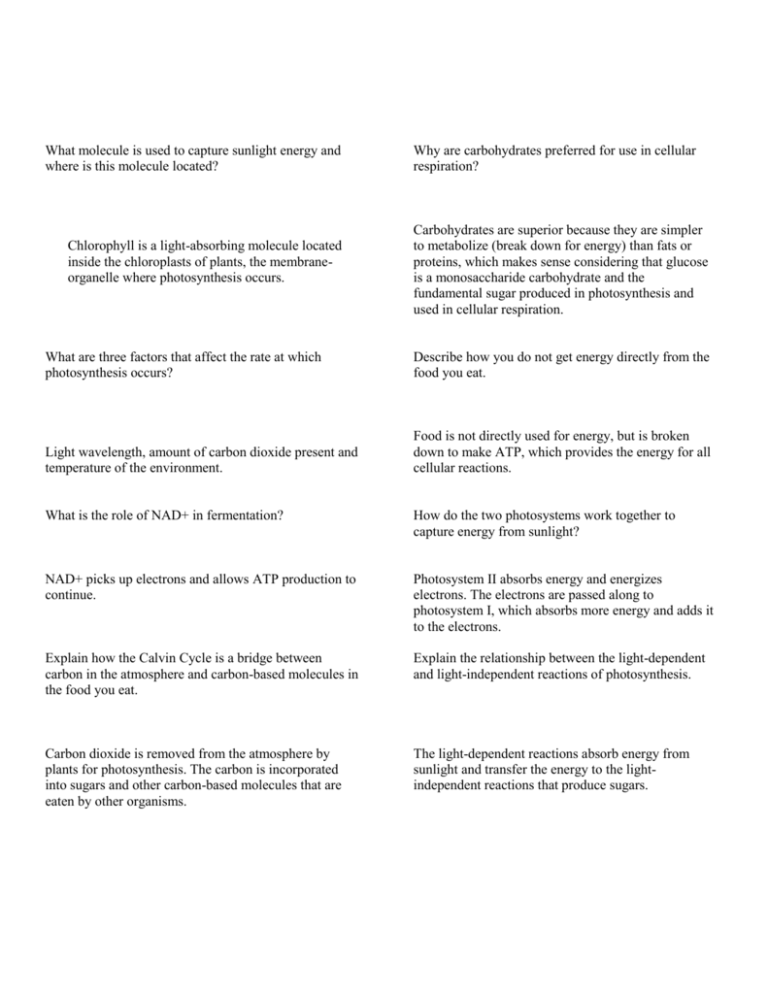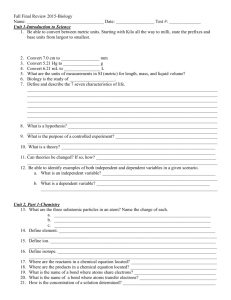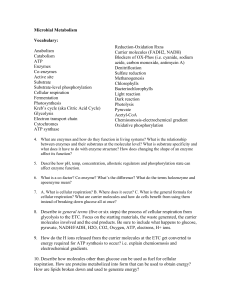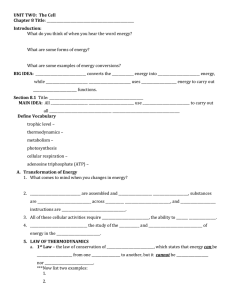What does a phospholipid look like
advertisement

What molecule is used to capture sunlight energy and where is this molecule located? Chlorophyll is a light-absorbing molecule located inside the chloroplasts of plants, the membraneorganelle where photosynthesis occurs. Why are carbohydrates preferred for use in cellular respiration? Carbohydrates are superior because they are simpler to metabolize (break down for energy) than fats or proteins, which makes sense considering that glucose is a monosaccharide carbohydrate and the fundamental sugar produced in photosynthesis and used in cellular respiration. What are three factors that affect the rate at which photosynthesis occurs? Describe how you do not get energy directly from the food you eat. Light wavelength, amount of carbon dioxide present and temperature of the environment. Food is not directly used for energy, but is broken down to make ATP, which provides the energy for all cellular reactions. What is the role of NAD+ in fermentation? How do the two photosystems work together to capture energy from sunlight? NAD+ picks up electrons and allows ATP production to continue. Photosystem II absorbs energy and energizes electrons. The electrons are passed along to photosystem I, which absorbs more energy and adds it to the electrons. Explain how the Calvin Cycle is a bridge between carbon in the atmosphere and carbon-based molecules in the food you eat. Explain the relationship between the light-dependent and light-independent reactions of photosynthesis. Carbon dioxide is removed from the atmosphere by plants for photosynthesis. The carbon is incorporated into sugars and other carbon-based molecules that are eaten by other organisms. The light-dependent reactions absorb energy from sunlight and transfer the energy to the lightindependent reactions that produce sugars. Summarize the aerobic stages of cellular respiration. Be sure to discuss the Krebs Cycle and the ETC. What is pyruvate and what is the role of pyruvate in cellular respiration? Products of glycolysis are broken down by the Krebs Cycle to make energy-carrying molecules and carbon dioxide. Energy from the Krebs Cycle is used by the ETC to make ATP. Pyruvate , a 3-carbon molecule produced by the breakdown of glucose, is needed for the Krebs Cycle, which is part of cellular respiration. Explain the roles of electrons, hydrogen ions, and oxygen in the ETC. Describe the similarities and differences between the Krebs Cycle and the Calvin Cycle. The ETC pumps hydrogen ions across the inner mitochondrial membrane. Hydrogen ions then flow through a channel that is bound to ATP synthase. Oxygen picks up electrons and hydrogen ions so that the ETC can continue to function. Both occur in the interior spaces of their respective organelles, and both are cycles of chemical reactions. The Calvin Cycle builds larger carbon-based molecules in chloroplasts to store energy. The Krebs cycle breaks down carbon-based molecules in the mitochondria to release energy.






